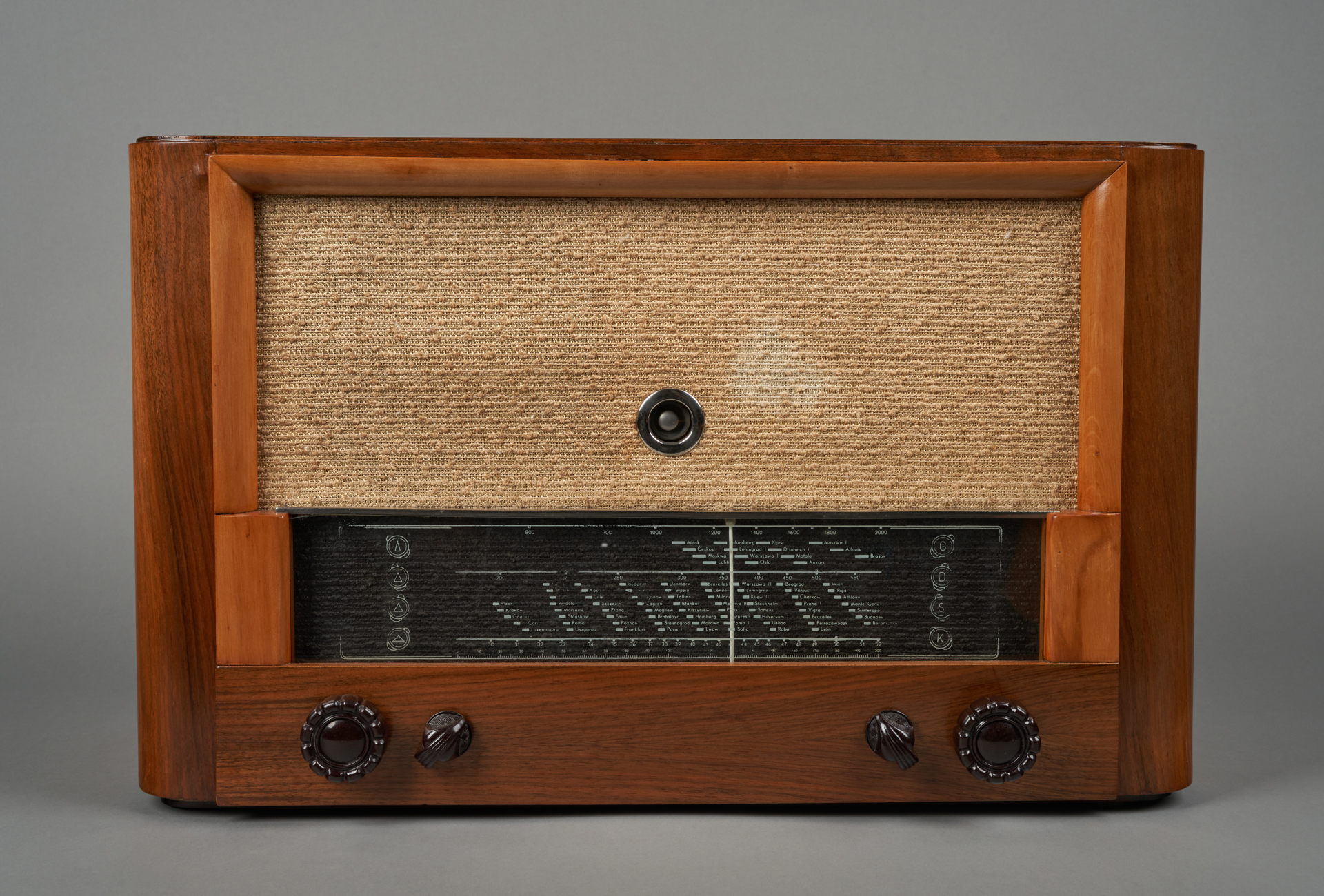
Syrena radio receiver
Zakłady Radiowe im. Marcina Kasprzaka, / 1954 - 1959Creator
Zakłady Radiowe im. Marcina Kasprzaka
Time and place of creation
Time:
1954 - 1959
Place:
Poland
The Syrena is the first radio receiver completely designed and manufactured in Zakłady Radiowe im. Marcina Kasprzaka in Warsaw (ZRK). It works with the short, medium, and long wave bands. With some modifications, the design was based on the electrical system produced by ZRK and Diora in Dzierżoniów for the RSZ-F Aga radio manufactured under a Swedish licence.
The year 1954, when the radio was marketed, was a breaking point in the history of radio. It was then that the operating range of the radio was extended and new content began to appear in radio transmission. In October 1954, the first Polish station broadcasting in the UHF band, which was soon to become one of the standards, was inaugurated in Warsaw. The Syrena was a model that did not yet support UHF. A new regular broadcast named “Sports Chronicle” was included in the timetable of Polish Radio Programme I – sports content would soon become an important, permanent part of radio and television broadcasting (both in terms of entertainment and economically).
Near the end of September 1954, an officer of the Public Security Ministry who had escaped from communist Poland, Col. Józef Światło, started hosting a programme on Radio Free Europe titled “Behind the scenes of the security and the party” and laying bare the functioning and abuse of the communist regime. That information fuelled social unrest and was one of the factors that led to the political changes in Poland related to the “October Thaw” of 1956. It also emphasised the significant degree of listener interest in content of this kind of sensational or criminalistic nature – the trend to provide such content is referred to as “tabloidization”.
The Syrena receiver, named after the Syrenka (“little mermaid”) – the symbol of the capital city of Poland – is a mains-powered, six-valve superheterodyne. It has a magic eye tuning indicator and a built-in GED 20/2 magnetoelectric speaker. The Syrena was designed to receive programmes broadcast using amplitude modulation (AM). In comparison with the Aga, the design of the drive of the scale was changed by moving it from the top part of the wooden box to the lower part of the front panel. The radio receiver also had stepwise tone adjustment that is made simultaneously with the change of the width of band received. It is one of the solutions distinguishing the first receivers made at ZRK, such as the Stolica, Wola and Etiuda. ZRK’s trademark became the closing of medium frequency filters in square aluminium cans, while the competing Diora used round cans.
Author: Filip Wróblewski
Syrena radio receiver
Zakłady Radiowe im. Marcina Kasprzaka, / 1954 - 1959Creator
Zakłady Radiowe im. Marcina Kasprzaka
Time and place of creation
Time:
1954 - 1959
Place:
Poland











